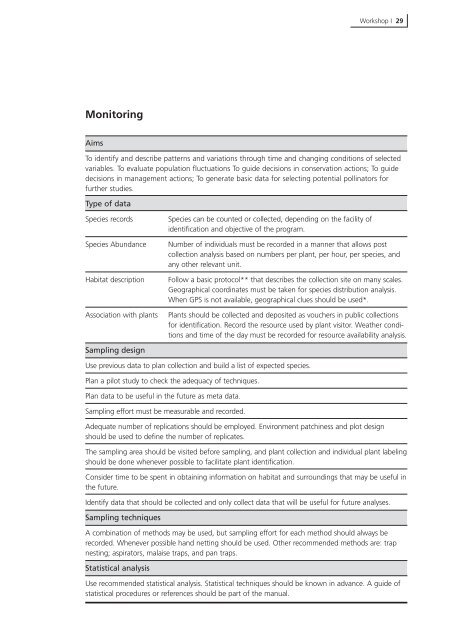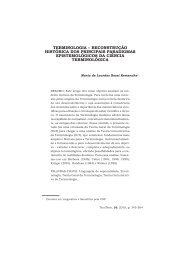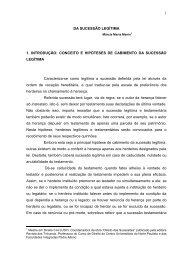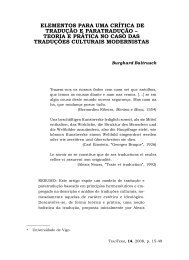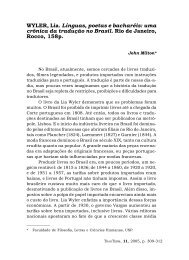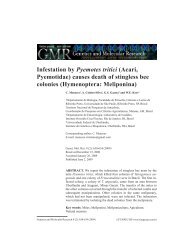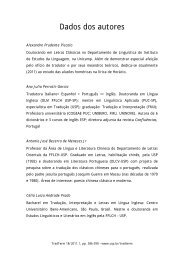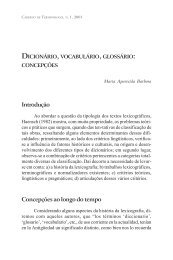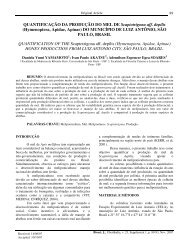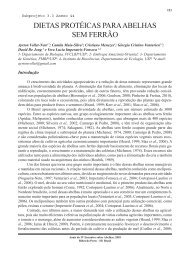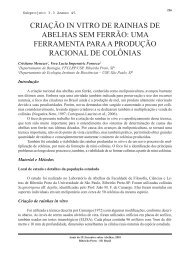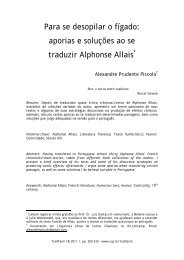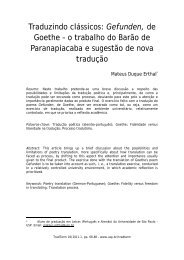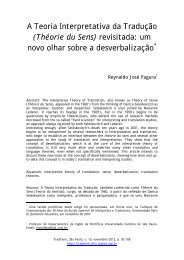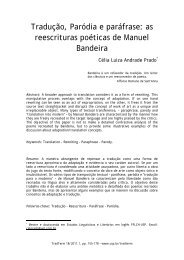Bees as pollinators in Brazil - USP
Bees as pollinators in Brazil - USP
Bees as pollinators in Brazil - USP
You also want an ePaper? Increase the reach of your titles
YUMPU automatically turns print PDFs into web optimized ePapers that Google loves.
Monitor<strong>in</strong>g<br />
Aims<br />
To identify and describe patterns and variations through time and chang<strong>in</strong>g conditions of selected<br />
variables. To evaluate population fluctuations To guide decisions <strong>in</strong> conservation actions; To guide<br />
decisions <strong>in</strong> management actions; To generate b<strong>as</strong>ic data for select<strong>in</strong>g potential <strong>poll<strong>in</strong>ators</strong> for<br />
further studies.<br />
Type of data<br />
Species records Species can be counted or collected, depend<strong>in</strong>g on the facility of<br />
identification and objective of the program.<br />
Species Abundance Number of <strong>in</strong>dividuals must be recorded <strong>in</strong> a manner that allows post<br />
collection analysis b<strong>as</strong>ed on numbers per plant, per hour, per species, and<br />
any other relevant unit.<br />
Habitat description Follow a b<strong>as</strong>ic protocol** that describes the collection site on many scales.<br />
Geographical coord<strong>in</strong>ates must be taken for species distribution analysis.<br />
When GPS is not available, geographical clues should be used*.<br />
Association with plants Plants should be collected and deposited <strong>as</strong> vouchers <strong>in</strong> public collections<br />
for identification. Record the resource used by plant visitor. Weather conditions<br />
and time of the day must be recorded for resource availability analysis.<br />
Sampl<strong>in</strong>g design<br />
Use previous data to plan collection and build a list of expected species.<br />
Plan a pilot study to check the adequacy of techniques.<br />
Plan data to be useful <strong>in</strong> the future <strong>as</strong> meta data.<br />
Sampl<strong>in</strong>g effort must be me<strong>as</strong>urable and recorded.<br />
Adequate number of replications should be employed. Environment patch<strong>in</strong>ess and plot design<br />
should be used to def<strong>in</strong>e the number of replicates.<br />
The sampl<strong>in</strong>g area should be visited before sampl<strong>in</strong>g, and plant collection and <strong>in</strong>dividual plant label<strong>in</strong>g<br />
should be done whenever possible to facilitate plant identification.<br />
Consider time to be spent <strong>in</strong> obta<strong>in</strong><strong>in</strong>g <strong>in</strong>formation on habitat and surround<strong>in</strong>gs that may be useful <strong>in</strong><br />
the future.<br />
Identify data that should be collected and only collect data that will be useful for future analyses.<br />
Sampl<strong>in</strong>g techniques<br />
A comb<strong>in</strong>ation of methods may be used, but sampl<strong>in</strong>g effort for each method should always be<br />
recorded. Whenever possible hand nett<strong>in</strong>g should be used. Other recommended methods are: trap<br />
nest<strong>in</strong>g; <strong>as</strong>pirators, malaise traps, and pan traps.<br />
Statistical analysis<br />
Workshop I 29<br />
Use recommended statistical analysis. Statistical techniques should be known <strong>in</strong> advance. A guide of<br />
statistical procedures or references should be part of the manual.


